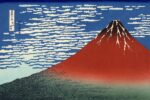Marco Casentini – Rollercoaster
.jpg)
Come scrive Demetrio Paparoni in catalogo, “Casentini espone in questa mostra per la prima volta dieci lavori semisferici che si collocano in una terra di mezzo tra pittura e scultura”.
Comunicato stampa
Progettoarte-elm è lieta di annunciare la mostra personale di Marco Casentini dal titolo Rollercoaster. L'esposizione si inaugurerà il 18 Aprile 2013 e rimarrà allestita fino al 08 Giugno.
Nato a La Spezia nel 1961 Casentini è tra gli artisti astratti italiani più rappresentativi della sua generazione. La mostra fa seguito alle recenti personali dall'artista da Melissa Morgan Fine Art, Palm Desert, Roy Boyd Gallery, Chicago e Abba Fine Art, Miami .
In occasione della mostra sarà pubblicato un catalogo bilingue con le immagini ambientali della mostra le foto delle opere, un saggio introduttivo di Demetrio Paparoni e una conversazione con Elio Cappuccio e gli apparati bio-bibliografici di aggiornamento dell’attività dell’artista..
Come scrive Demetrio Paparoni in catalogo, "Casentini espone in questa mostra per la prima volta dieci lavori semisferici che si collocano in una terra di mezzo tra pittura e scultura. Realizzati in plexiglas trasparente dipinto in alcune parti sulla superficie e in altre all'interno, questi volumi hanno un diametro che va da 13 a 80 centimetri, mentre la profondità, essendo condizionata dal diametro, di cui è la metà, varia da 7 a 40 cm. Questo implica che, contrariamente a quanto accade per i dipinti, dove l'artista agisce sulla superficie senza condizionamenti iniziali, in questo caso ha dovuto rapportarsi a calcoli matematici. [...] Il titolo di questo ciclo, Rollercoaster, montagne russe, rende subito chiaro che fa riferimento a qualcosa che esiste nel "mondo reale". Casentini si deve esser detto che, essendo le montagne russe frutto di un'ingegneria tutt'altro che puramente creativa – che deve sottostare a regole rigide per non mettere a rischio la vita di chi vi sale – anch'egli in questo caso avrebbe dovuto darsi delle regole. Fedele al principio del "tutto si mischia e tutto si confonde" in questo caso egli ha fatto un breve viaggio mentale nei territori della "pittura analitica" degli anni settanta. Lo conferma quando afferma che l'intento di questi lavori è "verificare la potenzialità della riga di diventare altro," una frase che negli anni settanta avremmo potuto sentire da Robert Ryman, oppure da uno degli artisti di Support-Surface. A togliere fondamento a quanto appena detto Casentini aggiunge che le linee ondulate, perlopiù grigie, di questi lavori sono la memoria delle tracce lasciate sulla sabbia dalle onde del mare. [...]L'allestimento scelto da Casentini dimostra che egli ha l'esigenza di alterare la percezione dello spazio tutto, sia quello interno sia quello esterno al quadro. Quel che colpisce di questa installazione è la mobilità ottica, la sensazione che le sue Rollercoaster stiano per trasformarsi in biglie e che, per quanto esse possano mutare d'aspetto ruotando, e prendere l'una al posto dell'altro, l'equilibrio formale non viene intaccato.
Progettoarte-elm is pleased to announce Marco Casentini’s exhibition whose title is “Rollecoaster”. The exhibition is scheduled to be inaugurated on April 18th 2013 and will end on June 8th.
Born in La Spezia in 1961, Casentini is one of the most representative Italian abstract artists of his generation. This exhibition follows up the artist’s latest personal shows at Melissa Morgan Fine Art’s, Palm Desert, Roy Boyd Gallery, Chicago and Abba Fine Art, Miami.
On this exhibition, a bilingual catalogue will be published, with the exhibition’s set pictures, photos of the works, an introductory essay by Demetrio Paparoni and a conversation with Elio Cappuccio as well as all the bio-bibliographical documentation related with the artist’s most updated activity.
As Demetrio Paparoni writes in the catalogue: “Casentini exhibits for the first time in this show ten hemispherical works that are placed in a ‘middle ground’ in-between painting and sculpture. Made of transparent Plexiglas that is painted on the surface in some sections and inside in others, these volumes feature a diameter spanning from 13 to 80 cm, whereas depth, since it is conditioned by its diameter, which is half of, ranges from 7 to 40 cm. This involves that unlike what occurs for paintings where the artist acts on the surface with no initial conditioning, in this case he had to relate to mathematical calculations (….). This cycle’s title, “Rollercoaster”, makes immediately clear he is referring to something that really exists in the ‘real world’. Casentini must have assumed that, since a rollercoaster results from an engineering project that is anything but purely creative – since it is subject to strict rules not to endanger the lives of those who get on it –he, too, in this case, had to follow some rules. Faithful to the “everything is mixed, everything is confused” principle, in this case he has made a short mental journey in the field of “analytical painting” of the Seventies. This is confirmed when he asserts that these works’ purpose lies in “checking the potentiality of a line to become something else”, a sentence that in the Seventies we might have heard from Robert Ryman as well as from one of the ‘Support-Surface’ artists. Removing foundation to what we have just said, Casentini adds that wavy lines, mostly grey, of these works are the memories of the traces left on the sand by the waves of the sea. (…). Casentini has opted for a setting up that shows that he needs to alter the perception of the whole space, both internal and external to the framework . What is striking about this installation is the optical mobility, the sensation that his Rollercoasters are about to turn into glass marbles and, since they may change in their appearance while they are revolving, taking the place of the one another, their formal balance remains unaltered.



